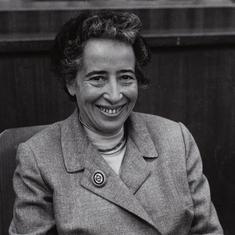In The Story of My Life, Helen Keller writes a tribute to her teacher, Anne Sullivan: “All the best of me belongs to her – there is not a talent, or an aspiration or a joy in me that has not been awakened by her loving touch.”
William Gibson’s play The Miracle Worker, directed by Arthur Penn for stage (1960) and screen (1962), shows us the opaque world of seven-year- old Helen before Anne’s arrival. We see Helen first as a fumbling shadow and then a blind-deaf-mute raging in her own silent universe. She has been this way since an illness in early infancy. Her despairing parents have combed through thickets of medical institutions and taken Helen to specialist after specialist without success. Now they must have help at home, or else Helen, the elder of two children, may have to be put into an asylum.
In 1887, 21-year-old Anne Sullivan arrives at the Keller home in Tuscumbia, Alabama, as a governess. She has had a Dickensian childhood of poverty and disease. When we meet her, she is still suffering from trachoma.
Sullivan soon discovers that Helen is not a gentle soul ready to be guided, but a fist-pummelling and hand-biting demon who has been seldom reprimanded or brought to heel. “No pity,” is Annie’s maxim, and she battles with Helen both emotionally and physically until she makes a breakthrough. Fortunately, she has the support of Helen’s mother, who, in spite of an obstreperous husband, is determined to learn the manual alphabet and communicate with Helen besides giving her the security of a mother’s lap and arms.
Filmed in grainy black and white, The Miracle Worker is a fierce and demanding movie with wit and humour squirrelled into the dialogue. The performances of the lead actors are vigorous and visceral. Gentleness offsets the ferocity. There is time for Annie and Helen to paddle in a shallow brook, sit in the branches of a tree and feel the wind, and feel the wonder of life as a chick breaks out of an egg. The blurred flashbacks are a little tedious, and the climax is a tad contrived, but the seminal scenes of meal-time tantrums and the penultimate moments at the water pump are unforgettable.
Today, more than 50 years later, irrespective of remakes, Penn’s film remains a landmark, having won Oscars both for Anne Bancroft (Best Actress) as Sullivan and 12-year-old Patty Duke (Best Supporting Actress) as Helen. Whether the film is fact or fiction has ceased to matter. In the world of cinema, The Miracle Worker is a legend.
Sanjay Leela Bhansali’s Black (2005) is considered the brave beginning to such story in Hindi cinema. The first hour of Black unspools in signature Bhansali – ostentatious, inflated mise-en-scene. With gathering alarm, one realises that Black is The Miracle Worker in an abbreviated, almost spoof-like redux. Debraj Sahay (Amitabh Bachchan) plays a snarling, inebriated and sight impaired teacher or “magician”. He is hired by Anglo- Indian couple Paul and Catherine McNally (Dhritiman Chatterjee and Shernaz Patel) to teach their deaf and blind daughter Michelle (Ayesha Kapur as the child and Rani Mukerji as the grown-up). In their shadowy, statue filled mansion, the garrulous Debraj tells Mrs McNally that he would like to teach and discipline Michelle behind closed doors. She allows her sightless and deaf child to be alone in the company of a drunkard. The absurdity of the plot grows exponentially thereafter with the subtlety of a sledgehammer.
Is it necessary to establish that impaired children can only be assisted by impaired adults in the movies? In order to keep up hope and faith, must all differently abled children be compensated with outstanding talent? Cruel questions, these, but an audience may well wonder at some of the simple-minded stories offered by Hindi cinema in the last decade.
Nagesh Kukunoor’s Iqbal (2005), an enjoyable watch on many counts, also provides us with a drunken layabout (played with disarming nonchalance by Naseeruddin Shah) who helps the deaf-mute aspirant Iqbal (an energetic Shreyas Talpade) win his way into a national cricket team. The drunkard, a has-been cricketer himself, (wouldn’t you just know it?) coaches Iqbal to being hailed the man of the match.
Aamir Khan’s Taare Zameen Par (2007) involves a dyslexic child (Darsheel Safary) being shunted off to boarding school. Here the art teacher (Khan), who was once dyslexic, finds the child’s great talent in art. Surely and sweetly, the duo wins an art competition and their paintings make for the front and back cover of the school magazine. The question of favouritism doesn’t occur to anyone, a second equally talented but non-afflicted child is nowhere in the scheme of things, and except for ticking off everyone else in the film, there doesn’t seem to be much struggle for the teacher to bother with.
In contrast is Sai Paranjpye’s Sparsh (1980), which makes it clear that teachers cannot be plucked from the air or arrive gift-wrapped. Teaching the blind (or the sighted, for that matter) is not about conveniences, coincidences, sob stories, talent spotting or fire fighting. Teaching, however creative, is a planned activity and meaningful teaching comes from acquiring specific skills (in this case, tactile and auditory) in order to articulate subject matter appropriately. That is why Kavita Prasad (Shabana Azmi), no matter how committed or capable of storytelling, cannot be an effective teacher the minute she steps into a classroom. The stories she tells her blind students must concern sound, not appearance; she must read and learn beyond the world she knows.
In Sparsh, we see teachers committed to the well-being of their wards and guiding students to find their strengths through their own efforts. There may never be prizes, felicitations or even miracle workers. Talent, whether in teacher or taught, is to live with knowledge, resilience, humour and dignity.










